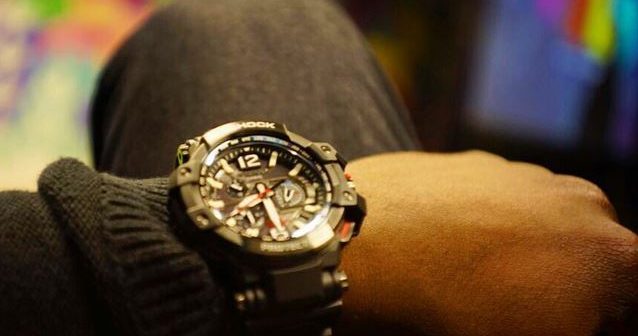There are so many smartwatches on the market, and they range from £50 to over £10,000, but the question for me is whether being able to read your notifications, pay for your shopping and running iOS or Android Wear is all that qualifies a watch to be “Smart” or is there more to “Smart” in Smartwatch than just notifications and LCD on your wrist. I have been branching out of the usual smartwatch catalogue and that led me to the discovery or shall I say led me to revisit Casio’s G Shock watch range. They have some great features that should in my opinion also put them in the smartwatch category. They might not have the fancy touch screen and ability to make calls from your wrist, but the technology inside them should give them the pass. So how smart are they?
Smartwatches dates all the way back to 1927 when we saw the Plus Four Wristlet Route Indicator, which used manual scrolls to give route guidance from A to B, then fast forward to 1982 when Seiko showed off their TV Watch. Those two smartwatches in history should give you a rough idea of where the thinking behind watches was back then. You can always read the full history of smartwatches over at Wareable, where they have compiled a list that may or may not shock you or result in nostalgia.
I took a look at the G Shock GBA-400-3BER and the GPW-1000-1AER, and they both have their respective features that makes them smart in their own right. Both of them are mostly made of plastic material and while the GBA-400 rocks both analogue and digital LCD times, the GPW-1000 is only analogue. The GBA-400 is a Bluetooth watch that is accompanied by a free app in the iOS or Google Play store; the app allows you to compile your music playlist, and using your watch, you are able to play, change tracks and also adjust volume using the rotary dial on the side of the GBA-400. The G-Shock+ app is essentially how you get your watch talking to you smartphone rather than paring up your device the old fashion way – it also allows you to control your native music app (tested on iOS) and you can also install G’Mix app which gives you extra controls over your equalizer settings, interface and when you are not sure about a tune playing on your radio, you can use it to identify them using the built-in SoundHound.
It seems that a lot of the smart functions happens on the accompanying app, but it still doesn’t allude to it not being a smartwatch. Just as the likes of your Android Wear watches, you can tell the time, set an alarm, control your music and the only thing missing is the ability to check you notifications or Google now feature, but are those really needed? Or is this a way to escape those features if you aren’t interested in all those battery draining benefits? While those other smartwatches rely on your smartphone to really function, the G Shock seems to be stand alone, for example to adjust the time on other smartwatches when in another country, you would need to have it connected to your phone to receive time update, but with the G Shock, you can set your local time before leaving home, and using the built-in GPS radio, your watch will automatically adjust itself and the time is as accurate as it can be.
The GPW-1000-1AER is not as smart as the GBA-400, in the sense that it doesn’t connect to your smartphone at all, however it’s smart when considering how it’s capable of automatically setting the time based on location, without you having to manually set it up. Featuring a Hybrid satellite system, it defaults to Multi Band 6 or Atomic Timing Masts to ensure wherever you are in the world, you have a reliable global time synchronization. The automatic hand adjustment function checks the home position of the hands every hour and corrects it if necessary – either by adjusting from shocks or using the influence of magnetism.
Besides the smart feature of automatically setting your time and connecting to your smartphone, they are both designed to be rugged, durable and long lasting. They are shock resistant, water resistant and can be used in almost any environment. The artificial sapphire glass is scratch resistant so that time can stay visible no matter what activities you get yourself involved in.
After using both watches, the question is whether the features they possess are enough to classify them as smart? Or what actually qualifies as smart on a watch? When does a watch transition from just telling time to being smart? Let us know you thoughts in the comments or over on Twitter and Facebook



